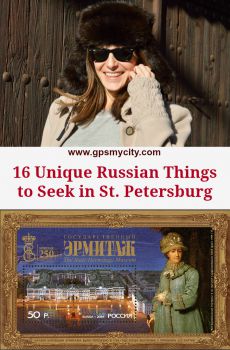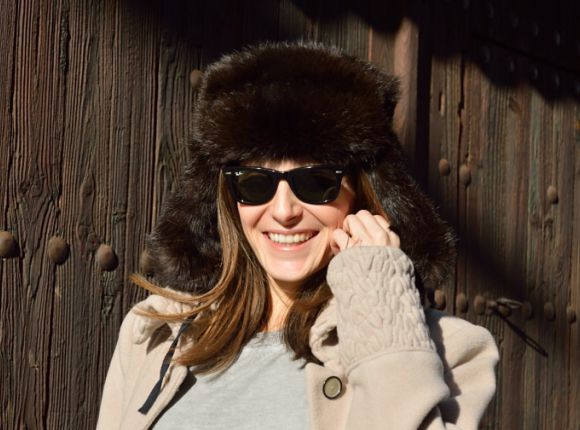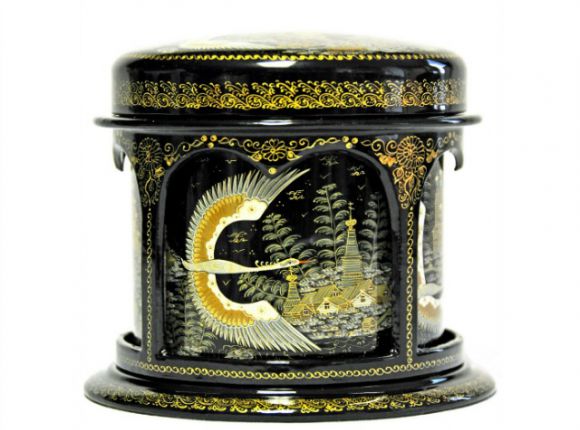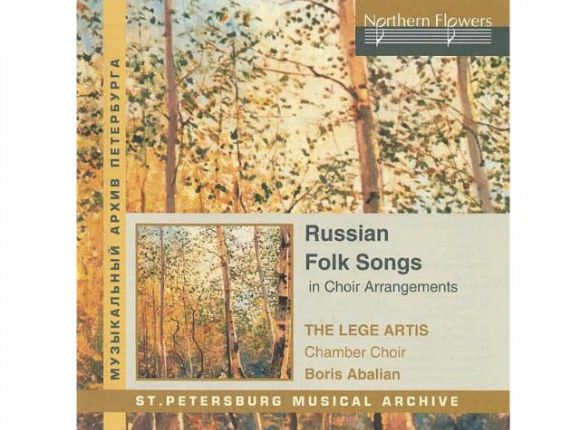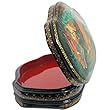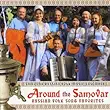1. Replica Fabergé Eggs
The original Fabergé eggs are museum artifacts. These jeweled eggs - 50 in total - were made by the House of Fabergé in Saint Petersburg between 1885 and 1917. Most of them were created as Easter presents for the Russian Royal Family and were presented to the Russian Emperors, Alexander III and Nicholas II. Made of gems and precious metals, these eggs are unique pieces of art. Traditionally, each egg opens in various ways and conceals a surprise, be it a family portrait or a tiny jewel. Nowadays, replicas of the Fabergé eggs are not very expensive. A miniature egg worn on the neck would cost about $20. A large egg with an original design and expensive material may set you back a few hundred dollars. Either of them would make a good gift from St. Petersburg.
Where to find it:
Torgovii Dom F-style
ul. 17, linia 22, Saint Petersburg, Russia
phone: +7 (812) 971-76-07
email: info@lux-gift.ru
http://www.lux-gift.ru/
Buy It on Amazon:
Offline reading and travel directions:
With GPSmyCity App you can read this article offline on your mobile device, use the embedded offline city map and GPS navigation, as well as create a self-guided walk to visit the venues featured in the article.
2. Imperial Porcelain

Imperial Porcelain is the product of The Imperial Porcelain Manufactory (IPM), also known by its Soviet name - The Lomonosov Porcelain Factory, which is one of, if not "the" best china manufacturer in Russia. The factory was established in 1744 in the town of Oranienbaum (currently Lomonosov). Engineer Dmitry Vinogradov developed formula for the porcelain similar to that of Saxon, which was heavily guarded a secret. The Russian porcelain was made entirely of Russian ingredients. In the beginning, the factory produced wares only for the Russian Royal family and Imperial Court. Nowadays, the Imperial Porcelain is widely available and even exported. Cobalt net, a signature pattern of the Imperial porcelain, was introduced in 1949 and has become the factory's trademark ever since. The range of porcelain produced by IPM is vast and includes tea & coffee sets, dinnerware, etc., while the Cobalt Net collection remains the most popular item. Prices range from $15 for a simple cup to $11,000 for a set of sophisticated dinnerware.
Where to find it:
Imperial Porcelain store nr.1 (located on the territory of the factory)
Prospekt Obukhovskoy Oborony 151, Saint Petersburg, Russia
http://www.ipm.ru/shops/6
email: nik_ma@ipm.ru
phone: (812) 560 85 44
Working Hours: Monday-Sunday: 10:00-20:00
Imperial Porcelain store nr.2
Vladimirskiy prospekt 7, Saint Petersburg, Russia
Phone: (812) 713 15 13, (812) 572 73 59
E-mail: nek_gy@ipm.ru
Working Hours: Monday-Sunday: 10:00-21:00
Imperial Porcelain store nr.11
TRK "Grand Kanyon", Prospekt Engelisa 154, Saint Petersburg, Russia
Phone: (812) 332 02 88
E-mail: kor_nk@ipm.ru
Working hours: Monday-Sunday: 10:00-22:00
Buy It on Amazon:
Offline reading and travel directions:
With GPSmyCity App you can read this article offline on your mobile device, use the embedded offline city map and GPS navigation, as well as create a self-guided walk to visit the venues featured in the article.
3. Amber Souvenirs
Just as any other Baltic city, Saint Petersburg is big on amber, the large deposits of which are found in the Baltic region. In fact, the neighboring Kaliningrad, former Königsberg, oblast accounts for nearly 90% of all the world's amber deposits. In Russia, amber is seen as a symbol of health and prosperity. An amber souvenir adorned with an image of Russian land- or marinescape will definitely make a cute gift to take home. The most interesting type of amber is that with the shade of pale green or yellow. To avoid fakes, make sure to buy from authorized dealers, specialized shops or workshops near museums. A simple, small-size amber souvenir will cost around $70.
Where to find it:
Amber Palace
on the Moika near Palace Square
http://www.amber-palace.ru/
email: amber-palace@yandex.ru
Working Hours: Monday-Sunday: 9:00-21:00
phone: (812)315-43-63
Buy It on Amazon:
Offline reading and travel directions:
With GPSmyCity App you can read this article offline on your mobile device, use the embedded offline city map and GPS navigation, as well as create a self-guided walk to visit the venues featured in the article.
4. Ushanka – Russian Fur Hat

No trip to Russia is complete without procuring a typical Russian fur hat, ushanka. The name translates directly to "ear hat" because of the two ear flaps that are usually either tied up on top of the hat or under one's chin to protect ears, cheeks, chin, and jaw from frostbites. Very handy garment for St. Petersburg in winter, hence, perhaps every foreign guest to the city feels obliged to buy themselves one, showing preference to those kitschy and more garish in design, though.
Although the hat is rather padded and thick, it’ll hardly replace a crash helmet should one opt to ride a bike in it, but it may do you good in a jolly snow-fight or if you crash headfirst into a pile of packed snow. Of all the souvenirs from St. Pete, this is probably one of the most practically useful, so investing wisely is highly recommended. Ushankas are equally popular with tourists and locals alike, and for this reason, they can be bought almost anywhere in Russia, from street markets to high-end stores.
5. Lacquered Boxes
Russian lacquer art stems from the highly evolved technique of icon painting practiced in the Imperial Russia prior to the Bolshevik Revolution of 1917. Following the revolution and the ensued anti-church campaign, many of the icon painters lost their jobs and had to resort to alternate forms of art in order to make a living. One such alternative was the making of papier-mâché decorative boxes and panels, lacquered and hand-painted. The most popular motifs used in decoration of such items are the scenes from Russian fairy tales.
Where to find it:
Babushka Shop
http://spb.blizko.ru/
Phone: +7 (812) 321-14-77
nab. Leitenanta Shmidta 33, Saint Petersburg, Russia
Buy It on Amazon:
6. Raketa Watch
The Raketa ("rocket") watch is produced by the namesake factory located in the town of Peterhof (near St. Petersburg), the former dwelling place of the Russian Emperor Peter the Great, renowned for its numerous fountains. The factory has a long and eventful history.
It was established by Peter the Great himself to produce lapidary works and, over the centuries, has outputted a great number of highly-artistic items for the Russian Royal Family. After the Revolution, at some point, in 1927, the factory produced veneers for Lenin’s mausoleum, and later, in 1934, ruby stars for the Moscow Kremlin. In fact, it wasn't until after the World War II that the factory started making watches. In keeping with the factory's old tradition, the Raketa watch brand proved remarkable piece of clockwork in terms of reliability and precision. The featured designs are Russian and Soviet theme-based.
Where to find it:
TC "Nevsky Atrium"
St. Petersburg, Nevsky ave. 71 M. Majakovskaya
Every day from 10-00 to 22-00. Bestwatch Tel: +7 (812) 677-71-00
Alltime
St.Petersburg, «Kuptsa Yakovleva» mall, 38 Sadovaya str., 2 floor
STATUS
27, Liteyniy prospect, St Peterburg status-watch.ru + 7 (812) 327 25 00
BABOCHKA
Saint-Petersburg 36, Nevsky prospect
www.babochka.ru
+7 (812) 324 32 29 +7 (812) 324 56 25
Buy It on Amazon:
7. N.C. Krupskaya Confectioneries
The N.C. Krupskaya confectionery was established in 1938 and is currently one of the largest sweets manufacturers in Russia. Even during WWII the factory didn't stop production, outputting in 1943 some three tones of the “Mishka na Severe” candies. Eventually, in 1966, this candy label became the factory trademark. A peculiar feature of the Krupskaya products is graphic design. In 1967 the factory established partnership with some famous Russian painters to create a memorable image for its products. Resulting from this partnership have been candy boxes sought after as collectible items for their artistic value. Some of these graphic works, like those by painter T.V. Lukyanova, have won numerous awards at various shows in Russia and abroad. Also, many of the works have become museum pieces. Presently, the factory produces a wide range of chocolates and candies. Prices are not steep. A bar of “Mishka na Severe” chocolate is about $1.
Where to find it:
Konditerskyi Magazin N.C. Krupskaya
Ulitsa Vosstaniya 15, Saint Petersburg, Russia
Phone: +7 (812) 346-55-32
8. Belomorkanal Cigarettes

Belomorkanal is a famous brand of Russian cigarettes produced by the Uritsky Tobacco Factory in Leningrad since 1932. The brand was created to celebrate the completion of the White Sea–Baltic Canal commissioned on August 2, 1933. The design of the pack, created by Russian artist Andrey Tarakanov, hasn't changed a bit since the beginning and remains original. This brand of cigarettes quickly gained popularity in the Soviet era because of its cheapness and is still largely associated with that period. Belomorkanal cigarettes are made without filters, having instead a hollow cardboard tube followed by a thin cigarette-paper tube filled with tobacco. One pack contains 25 fifth (one of the lowest) class cigarettes. Each cigarette contains a high level of resin (27-32 mg) and nicotine (1,5-1,7 mg). Belomorkanal are considered strong cigarettes in Eastern Europe. It is still produced in Russia and some of the ex-Soviet republics. Some Russians tend to smoke Belomorkanal all their life. The demand of it is still strong. A pack of Belomorkanal costs about 60 cents.
Where to find it:
NevoTabak shop
ul. Sadovaya 29, Saint Petersburg, Russia
Phone: +7 (812) 3159496
9. Nevskaya Kosmetika

Nevskaya Kosmetika is a Russian manufacturer of cosmetic products and perfumes, located in St. Petersburg. Established in 1839, today it offers nearly fifty types of cosmetic care products. Nevskaya kosmetika is one of the leading cosmetic brands in Russia, largely owing its popularity to the high quality and affordable prices. Perhaps one of its most famous product lines is the “Degtearniye” collection, whose key ingredient is birch bark oil ("degot" in Russian; hence the name). Other popular NK products include Spermatsetovyi ("spermaceti") cream, Gerontol cream, Vecher ("evening") cream, Vorojea ("soothsayer") set and others. NK toothpastes, such as Jemchiug ("pearl") and Lesnaiya ("forest"), are also very popular. A piece of Nevskaya Kosmetika can certainly make a good gift from St. Petersburg, especially given that the name of the brand “Nevskaya” is closely associated with the river - Neva - upon which the city stands. “Degtearniye” soap will cost you less than $1.
Where to find it:
Official Store “NK”
pr. Obuhovskoi Oboroni 101, Saint Petersburg, Russia
Working hours: Monday-Thursday: 9:00-17:00, Friday: 9:00-16:00
10. Russian Icons

Russia's main religion is Orthodox Christianity and Russia itself is the country of many picturesque churches. One of the key attributes of the Orthodox church is an icon – a traditional form of religious painting. Icons started to appear in Russia upon its conversion to Christianity in 988 AD. In the beginning, Russian icon painting strictly followed Byzantine tradition. Eventually, the local artists adopted other styles and developed their own, specific to the Russian Orthodoxy. Russian icons are typically painted on wood or cloth, depicting Orthodox Saints, important Orthodox events or various religious scenes from the Bible. The size is usually small.
Nowadays, many of the old icons are collectible items, of which the most famous and oldest are kept in museums. Some of the Russian icons are said to have a healing effect on people. A copy of a Russian icon can make a good gift to take home. Note: it is illegal to take out of the country authentic icons older than one hundred years. A simple copy of an ordinary icon would cost about $4. A high-quality reproduction can cost up to 100 dollars. For original icons, go to antique shops and/or art galleries.
Where to find it:
Russkaia Ikona
ul. Italianskaia 11, Saint Petersburg, Russia, 191011
Phone: +7 812 314-70-40
Buy It on Amazon:
11. Zenit FC Accessories
Zenit football club was established in 1925; its home ground is the Petrovkiy stadium with a capacity of about 20,000 seats. Zenit is the most famous and loved football club in St Petersburg. Because of its popularity, you can find Zenit accessories almost in any souvenir shop throughout the city. What's more, upon arrival in St Petersburg you are greeted at the airport with Zenit symbols, including the famous “rose”. “Rose” is what the locals' call a white-blue scarf worn by Zenit supporters. At a football match you can see them wave the “rose” in the stadium. White and blue are the team's official colors, hence all the Zenit paraphernalia are white and blue. A Zenit scarf costs around $15-20.
Where to find it:
Petrovskiy Stadium Official Store
Working hours: 10:00-20:00
Petrovskiy Stadium, Saint Petersburg, Russia
phone: 8 911 111 91 48
12. Traditional Music Instruments
Treshchotka and Balalaika are the two most quintessentially Russian traditional music instruments. Balalaika is one of the most popular and oldest instruments played in Russia, first mentioned documentally in 1688. Balalaika has a triangular body with three strings. The size can vary from very large to small. Treshchotka, i.e. "clapper", is another popular Russian folk music instrument. It represents a set of small boards clapped together on a string and producing sound similar to hand clapping. Either of these instruments would make a good present to a music fan. A quality balalaika can cost about $155. A simple treshchotka is about $5.
Where to find it:
ul. Basseinaya 37, Saint Petersburg, Russia
Phone: (812) 388-79-92
Buy It on Amazon:
13. Baltika Beer
Baltika is perhaps the most popular beer brand in Russia, originally from St. Petersburg. Baltika brewery has been in operation for only 20 years, but has already reached international stardom. The company produces a spectacular range of beers, of which the top brews - Baltika 3 and Baltika 7 - can be found practically in every shop or bar in the country. Located near Parnas subway station, the brewery offers tours in English. An on-site gift shop carries a selection of Baltika beers along with some souvenirs.
Where to find it:
JSC Baltika Breweries:
6 Verkhny per., d. 3
194292 St Petersburg
+7 (812) 325-93-25
14. Vodka

Even a first-timer to Russia must have heard of or drunk Russian vodka one time or the other. Indeed, this alcoholic drink has become an inseparable part of the Russian culture and many myths associated with it. Curiously enough, but it wasn't until the late XIX century that the Russians first learned of vodka, or rather 'table wine' as it was called in those days. Made possible thanks to the imported equipment for alcohol purification, the so-called 'table wine' soon became popular and prompted the government to impose a monopoly over its manufacture. Many attribute authorship of the vodka formula to Dmitry Mendeleev, renowned chemist and author of the Mendeleev table, who indeed, at some point, studied the interaction of ethanol with water. However, the official birthday of vodka is fixed to a much later date - January 23, 1936 - when the Soviet government introduced a standard for industrially-produced vodka as a transparent liquid resulting from the blend of ethanol and carbon-filtered water, and having the strength of 38-40%.
Notably, the Russians never consume vodka without a snack, stemming from which is the Russian snack table ("zakusochnyi stol") tradition. The most common snacks to accompany vodka are the "coated herring", Russian salad, pickles, caviar, lard ("salo"), marinated tomatoes or mushrooms, sauerkraut, and aspic ("holodets" - fish or meat in jelly).
The right way to take vodka is to first exhale and then knock it back in one gulp, to be followed by a snack to mitigate the effect.
A popular colloquial “frontovye sto gramm' (the front line 100 grams) refers to the World War II custom of giving soldiers in trenches 100 grams of vodka each day to keep their spirits high and to warm up their bodies. Nowadays, you can treat yourself to the "front line 100" as you see fit, courtesy of the abundance of vodka on sale in St. Petersburg.
Where to find it:
Aromatnii Mir Shop
Izmailovskii pr. 25, Saint Petersburg, Russia
Phone: 575-46-97
Working Hours: 09:00-22:00
15. Russian Folk Music CD
Russia is a nation with rich musical tradition and is particularly well-known for its folk music. The latter is traditionally associated with rural life and traditions. The roots of the Russian folk music come from the Slavic, Finno-Ugric, Turkish and other ethnic cultures. Among the traditional genres are the so-called wedding, lyrical, dancing, epic and other. Curiously enough, perhaps the most popular Russian "folk" song, known world-wide as “Kalinka-malinka”, was in fact written by composer Ivan Larionov in 1860. Still, a CD of Russian folk music can be a good choice for a gift from Saint Petersburg. The offer is vast. Whether you like jolly songs or lyrical ones, you can easily find them all in St Petersburg. The price of one CD is about $5-10.
Where to find it:
Iupiter-Disk
Commercial Center Elizarovskii, Babushkina 8, k.2, Saint Petersburg, Russia
phone: 8-921-188-11-70
Working hours: 10:00-21:00
Buy It on Amazon:
16. Chizhik-Pyzhik
The statue of Chizhik-Pyzhik was put in place in 1994, just opposite the former School of Jurisprudence in Saint Petersburg. This is one of the smallest statues in the city, measuring eleven centimeters in height and weighing just about five kilos. There is a rhyme associated with Chizhik that roughly translates to:
Chizhik-Pyzhik, where've you been?
In Fontanka, drank some vodka
Had a shot, had another -
So my head started swirling...
It refers to the students of the School of Jurisprudence who used to frequent a nearby bar on Fontanka street.
The tradition associated with this statue is to make a wish and then throw a coin. If you hit the statue, the wish is granted. A Chizhik-Pyzhik souvenir is definitely a good memento from Saint Petersburg. A high-quality alloy replica of Chizhik-Pyzhik costs about $70.
Where to find it:
Korogod-Art
ul Ordinarnaia 20, Lit.A, 197136, Saint Petersburg
email: info@korogod.ru
Phone: (812) 702-11-57
website: http://korogod.ru/
Other Interesting Souvenirs from Russia
If you are outside Russia and have no immediate plans to visit it soon, or you don't want to carry too much in your luggage on your way back home, these days you can find a wide selection of authentic and truly interesting Russian souvenirs online. Presented here are some of the top Russian products sought by foreign visitors, now available online for your convenience.
1. Khokhloma - Wooden tableware and figurines painted in a distinctive Russian “Khokhloma” style, featuring red, green and gold flower patterns on dark background, resulting in a somewhat metal-like appearance.


2. Gzhel - Enameled pottery and ceramics adorned in the distinctive blue designs on white background, the style originated in the Russian village of Gzhel (hence the name), near Moscow.



3. Soviet Memorabilia – collectible items (badges and other artifacts) dating back to and representative of the Soviet era.



4. Podstakannik - Tea glass holder much popular in pre-revolutionary and Soviet Russia, particularly for long train journeys. Mass produced during the Soviet era, today it represents a collectible item of the once traditional way of serving tea in Russia.


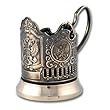
5. Rostov enamels – The art originally used in decoration of church utensils and icons in several towns across Russia, but eventually flourished in Rostov for painting miniatures on a thin copper plate covered on both sides with a layer of enamel. The painting technique is similar to that applied to porcelain, and involves several rounds (up to seven) of thermal treatment, each time with a new layer of paint added.

6. Malachite – Pieces of jewelry and other nice widgets made of malachite, deep green opaque gemstone found in Russia in rich supply and historically used for manufacturing fine items for the Russian royalty.


7. Zhostovo trays – Metal trays, masterly hand-painted in the Russian folk manner originated in the early 19th century in the village of Zhostovo, outside Moscow. The style is dominated by flower motifs and is said to be brought into Zhostovo from the Ural region.


8. Tolstoy and Dostoyevsky books – For those avid readers and lovers of Russian literature, these two authors are, perhaps, the most notable pillars of the Russian prose of all times.






9. Hair Barrettes – Russian-made, hand-painted hair slides (clips and barrettes) with a paper-mache base and metal clip on the back, covered on top with the “Zhostovo” style flower motifs painted in bright tempera and finished with layers of glossy lacquer. Good gift for women with long hair.




